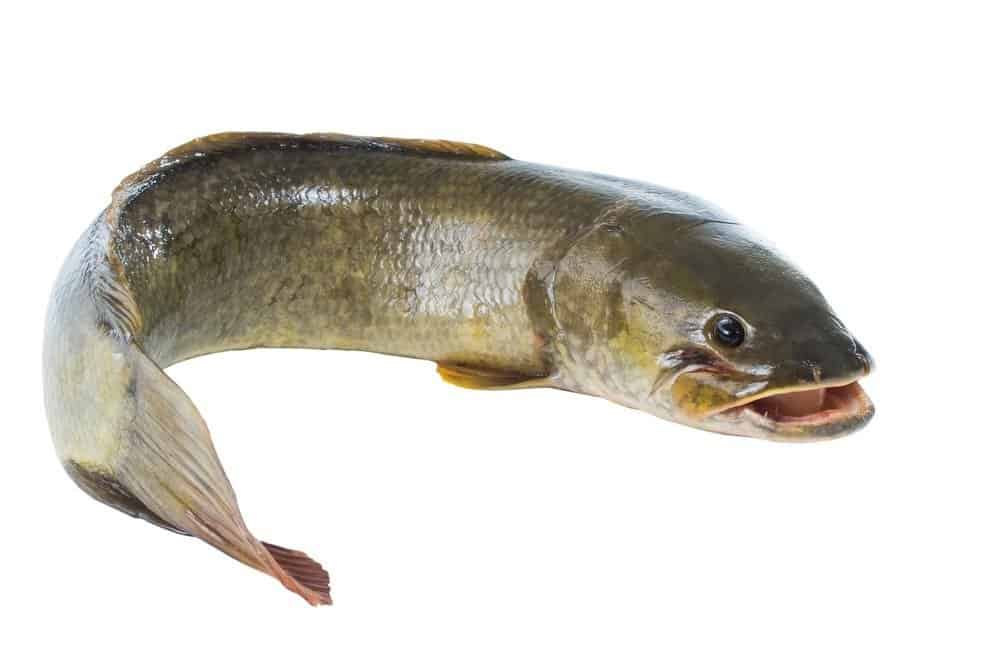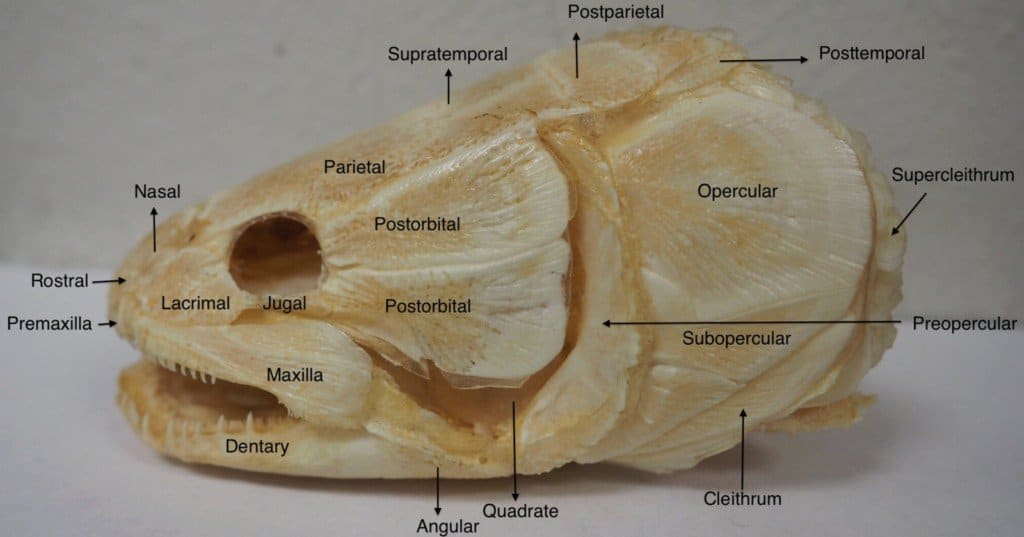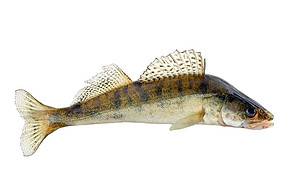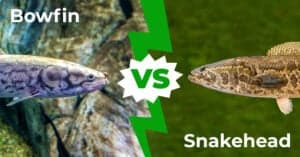Bowfins are ancient fish, or “living fossils”, that date back 200 million years. Like aquatic mammals, bowfin fish are air-breathing and they go above the water’s surface from time to time in order to breathe oxygen. These primitive sea creatures can survive poor water conditions as they are equipped with gills that are specialized to prevent them from collapsing upon air exposure. They are typically found in freshwater habitats such as streams, rivers, ponds, lakes, and wetlands that once ranged across South and North America, Europe, Africa, and Asia.
The bowfin eats anything small enough to fit in its mouth. When bowfins are present, they will keep other fish populations in check, particularly those of sport fish.
Bowfins are voracious carnivores, feeding mainly on crayfish, fish, mollusks, frogs, crustaceans, amphibians, larvae, and aquatic insects, which suggests that these sea creatures must have strong and sharp teeth in order to kill and eat their prey. But do bowfin fish have teeth? Below, we’ll explore everything you need to know about bowfin teeth.
Do Bowfin Fish Have Teeth?

Bowfin have conical teeth that can project from their jaws.
©IrinaK/Shutterstock.com
The bowfin is a carnivorous fish with a huge mouth containing strong, sharp, and conical teeth, and tubular nostrils for smelling. Bowfin fish are also known to have muscular bodies and powerful jaws along with their flesh-piercing teeth, the perfect combination for a sea predator.
Because of their projecting jaws and conical teeth, they can devour and swallow prey that is larger than their mouths. Bowfins use these razor-sharp teeth to capture and get hold of prey.
In terms of length, bowfin can grow from 15 to 28 inches, with females often being larger than males. It has been shown that bowfin fish can survive for up to 12 years in the wild and can grow much older in captivity.
What Do Bowfin Teeth Look Like?

Bowfin teeth are attached directly to their skull.
©CC BY-SA 4.0
Bowfin fish are commonly called dogfish in the Midwest, but not because they bark. Similar to that of a dog, a bowfin fish has a set of conical teeth that are extremely sharp, thus the unusual name.
The scientific name for bowfins is Amia calva, which is derived from the Greek words for fish and smooth. Their teeth are also somehow similar to those of a tyrannosaurus rex, which are impressively sharp and cone-like.
Bowfins are particularly bony and they possess a skull. The dermatocranium and chondrocranium are the two layers that make up a bowfin’s skull, which are both made up of about 28 bones that have all been fused together. Three bones, namely the ectopterygoid, vomer, and the palantine, all make up the roof of the bowfin’s mouth. Bowfin fish’s teeth are attached directly to two bones in their head, the premaxillae and the maxillae, which hold the teeth in place.
The bowfin’s numerous sharp teeth just adds to its unsettling facade. They have a humongous mouth that is lined with dozens of sharp teeth, making their jaw a lot more terrifying to look at.
Bullet-shaped body, armored plates all over its head, and a menacing mouth replete with a predator’s teeth make the bowfin fish look like a fossilized fish that came to life. A carnivorous scowl is not surprising to see on a bowfin as a result of its sharp canine-like teeth. While the bowfin’s dorsal fin, where it got its name, allows it to swim in any direction with similar agility, it is also lengthy and wobbling.
How Do Bowfin Fish Eat?

Bowfin can slam their mouths shut in less than one-tenth of a second.
©IrinaK/Shutterstock.com
The bowfin hunts at night, dawn, and dusk by opening its enormous mouth, pulling in prey, and then slamming its jaws together in a total average of 0.075 seconds.
“Predatory generalist” is what scientists like to call the bowfin, a fancy term for “eater of all things moving.” Archeological evidence has shown that the stomachs of bowfins have been found to contain a wide variety of organisms including fishes and worms.
Do Bowfins Bite Humans?
Bowfins are ferocious predators who chase and devour anything that moves in their path. This means that any part of your body that is submerged in water can be eaten by them, such as your finger. However, it may be difficult, or even impossible, for bowfins to break your finger bones apart to swallow the chunk inside, but they will certainly mark your fingertip with a scar.
People say bowfins are mean and scrappy, parallel to how they look. Well, at least that is what most anglers say. As far as predators go, the bowfin is one of the most ferocious. According to fishermen, these fish have bitten off a chunk of more than a few fingers.
Does a Bowfin Bite Hurt?
The sharp, canine-like teeth of bowfins can rip apart a human’s bare skin. So, unless you have a fur coating like bears and dogs, a bowfin bite can definitely harm you.
If you’ve been bitten by a bowfin, immediately cleanse the wound with peroxide and running water. Rinse and dry the wound, then apply an antibacterial cream or antibiotic ointment. The wound may become infected and cause pain for some time.
Is a Bowfin Bite Poisonous?
Angry and aggressive, the bowfin is a tough, angry fish to fight at the end of a line. However, the behavior of these fish does not make them poisonous to humans. Even though a bowfin bite might lead to bacterial infections, it does not have any toxic qualities.
It’s hard to find a fish more hostile than a bowfin fish. Anglers have reported bowfins striking them as they jump out of the water, inflicting terrible injuries. They’re also known for ripping up fishing lines and other gear. They often go back to the bottom after grabbing a lure, and the fishing line gets caught on roots or aquatic plants. It may seem like the bowfin aren’t moving at all when they land, but then they start to move violently, they tie up nets and line with their body thrashings.
The photo featured at the top of this post is © IrinaK/Shutterstock.com
Thank you for reading! Have some feedback for us? Contact the AZ Animals editorial team.






